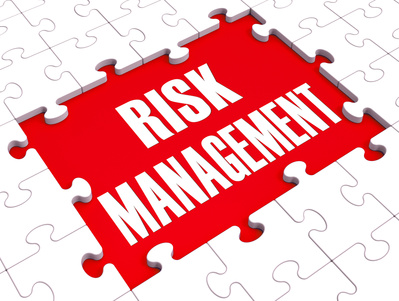Absolutely any business, be it oil exploration or aviation, or healthcare or textile, comes with an element of risk, big or small. Risk is the probability of harm to a business or any or all of its processes. Risk is inherent in each and every activity a business undertakes. A risk can affect the time, cost, reputation, or cause market value to crash. The risk in some sectors such as healthcare could go all the way up to death of the patient.
How does designing a Risk Management Toolbox help?
Because it is not always possible, even for the most experienced professionals and leaders, to anticipate all the risks that accrue to a business during its entire lifecycle; it helps to design some kind of a template that lists out the possible risks in an activity.
This should be some type of checklist against which management can keep evaluating the risk that goes into every activity the organization undertakes. This is what may be considered designing a Risk Management Toolbox. Designing a Risk Management Toolbox is a challenging task for an organization, because of the sheer complexity associated with such a task.

So, how does an organization design a risk management toolbox? Designing a Risk Management Toolbox is not something that can be done at once and used for a lifetime. Having said this, designing a Risk Management Toolbox is still a practical step an organization can take to assess risk and take steps to mitigate them. It entails taking the fullest steps to understand the minutest cause and source of risk in every of the business activities.
Designing a Risk Management Toolbox requires having the insight to understand these sources. It also requires having the foresight to anticipate the nature and gravity of risk in the future. All this means that designing a Risk Management Toolbox is something that requires a high degree of ingenuity and farsightedness.
General principles that need to be kept while designing a Risk Management Toolbox
When designing a Risk Management Toolbox, an organization’s management needs to keep a few points in mind:

ISO has a standard on risk management. It is contained in a series of standards that starts from the digit 3. Just like ISO 9000 is about processes; a few of the ISO standards in the ‘3’ series relate to ways by which organizations engaged in different types of businesses can go ahead with designing a Risk Management Toolbox that meets their individual business unique needs.
Designing a Risk Management Toolbox that is in accordance with ISO standards also ensures that the organization is compliant with regulatory standards and requirements.
Read More : https://www.mentorhealth.com/control/designing-a-risk-management-toolbox?wp_seo

 With the advent of globalization, the profile and nature of spread of many infectious diseases have changed. Earlier, many infectious diseases were limited to certain specific geographical regions. But this has changed with the emergence of the globetrotter. Additional factors such as globalization of trade and commerce and global warming have contributed significantly to propelling and motivating people to travel more and more all over the world. This trend has brought about a perceptible increase in the incidence and spread of infectious diseases globally.
With the advent of globalization, the profile and nature of spread of many infectious diseases have changed. Earlier, many infectious diseases were limited to certain specific geographical regions. But this has changed with the emergence of the globetrotter. Additional factors such as globalization of trade and commerce and global warming have contributed significantly to propelling and motivating people to travel more and more all over the world. This trend has brought about a perceptible increase in the incidence and spread of infectious diseases globally.